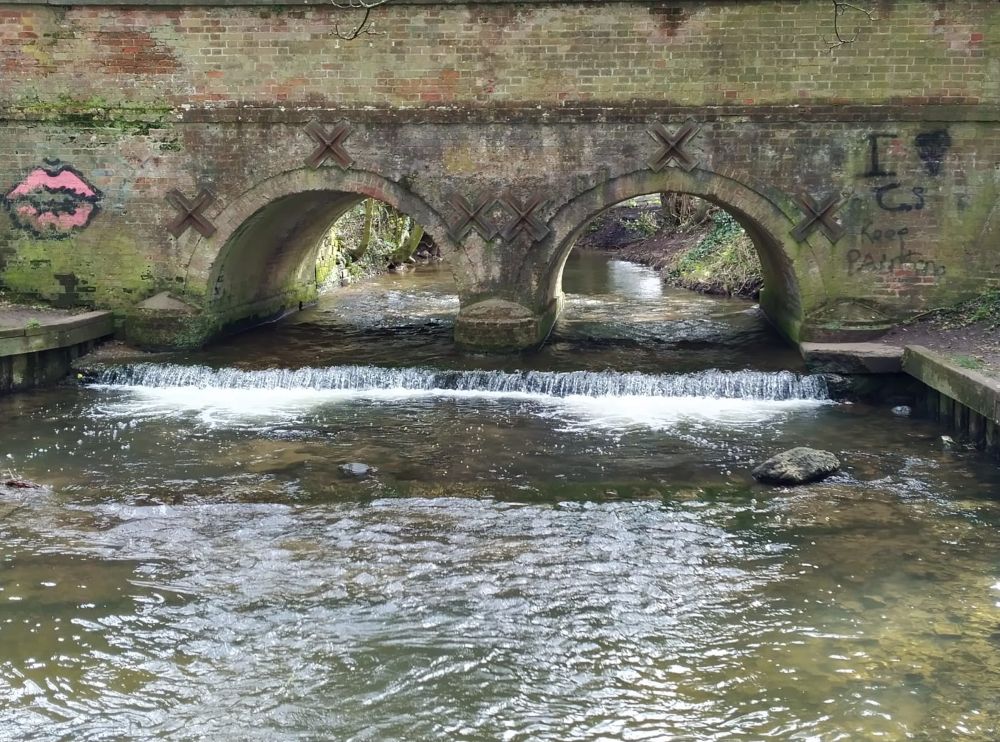
Our rivers have been heavily modified with the installation of structures, such as road bridges, weirs and mills, which create barriers to fish migration. Additionally, these structures impact the hydrogeomorphology and natural flow patterns of rivers. In most cases, these changes have negatively affected the ecological communities found upstream of the barriers due to genetic isolation, resulting in localised extinctions and unnatural species composition.
In Wymondham, a fish survey revealed that a redundant weir from a brush factory and a bridge sill below Becketswell bridge presented considerable obstacles to fish movement, the latter being impassable to fish during low flows.
In 2018, we partnered with the Environment Agency to remove the disused weir to enable the river to flow freely, thereby restoring natural riverine processes over time. In 2021, following 3 years of consultation and design, including flood risk modelling and bridge structure assessments, we returned to install a fish pass made with natural materials at Becketswell Bridge.
By gently raising water levels, the fish pass allows fish to move over the bridge sill in 95% of flow conditions.

The project enabled fish to migrate freely along the entire extent of the River Tiffey, including its headwaters. Fish surveys were conducted before and after the work, yielding the following results:
Downstream of the bridge sill, fish surveys conducted in 2017, 2020 and 2021 found the following species: dace, bullhead, stone loach, three-spined stickleback, minnow, perch, gudgeon and European eel.
Upstream of the bridge sill, in 2017, only 4 species were caught: dace, bullhead, stone loach and three-spined stickleback. In 2021, post-installation, minnow were added to the list of species that were found upstream of the barrier taking it up to 5 species.
The project was well-received by the local community, with many people commenting on an increase in wildlife present, including a little egret.
Ursula Juta, Senior Project Officer at Norfolk Rivers Trust, said:
“Working in the Tiffey catchment has been lovely. The residents have shown so much interest and support and clearly care a lot about their river. Working on a project which not only improves things ecologically but also benefits local people is very rewarding. People loved hearing about the fish living in their local river, and I hope they go on to tell more people. If people are aware of what’s in their river, they are less likely to drop litter and pollute it. Sharing knowledge and empowering local communities is the only way we can bring about change.”
Amy Prendergast, catchment co-ordinator at the Environment Agency in East Anglia, said:
“We are so proud to see the completion of this project, which has brought so many benefits to the local ecology. Removing the weir has helped to restore the river to a more natural habitat and also reduced the flood risk to properties near Damgate Bridge. The new fish pass further enhances those improvements, as now all species of fish can continue their journeys upstream. We are grateful to Norfolk Rivers Trust for all their hard work in helping make this project a success. We would also like to thank the funding partners Broadland Catchment Partnership, as well as the town council and residents for being so encouraging.”
This initiative was made possible by funding from the Environment Agency. With thanks to Aquamaintain for constructing the fish pass.
We use Mailchimp as our marketing platform. By clicking subscribe, you acknowledge that your information will be transferred to Mailchimp for processing. Learn more about Mailchimp's privacy practices here.
